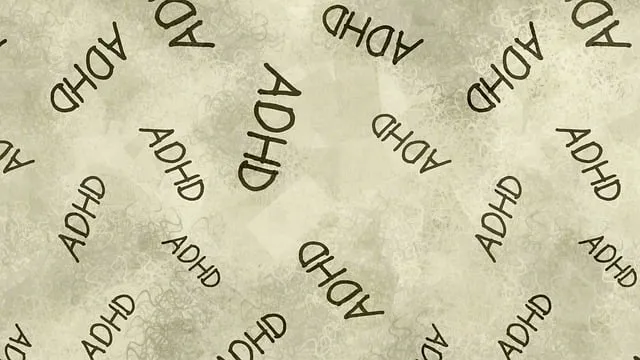Arvada Kaiser's mental health programs prioritize client safety through comprehensive risk assessment and harm minimization planning. They identify and mitigate risks like self-harm, trauma triggers, and misinterpretations of self-care practices by evaluating physical environments, staff interactions, therapeutic practices, and demographics. Proactive strategies include stress reduction methods, tailored interventions like Burnout Prevention and Mindfulness Meditation workshops, and regular reviews to adapt risk assessment plans. Following a four-step process, they conduct thorough risk assessments, develop personalized safety plans, implement clear monitoring protocols, and continually evaluate their effectiveness, ensuring a safe and supportive environment for both clients and staff.
Risk assessment and harm minimization planning are essential components of effective mental health care, particularly within initiatives led by organizations like Arvada Kaiser. This article delves into crucial aspects of risk management for mental health professionals, focusing on identifying potential hazards in Arvada Kaiser’s programs. We explore strategies for mitigation, providing a step-by-step guide to implementing and evaluating safety measures for optimal patient outcomes.
- Understanding Risk Assessment: Identifying Potential Hazards in Mental Health Programs
- The Importance of Harm Minimization Planning for Arvada Kaiser's Initiatives
- Strategies for Effective Risk Management and Mitigation Techniques
- Implementing and Evaluating Safety Measures: A Step-by-Step Guide for Mental Health Professionals
Understanding Risk Assessment: Identifying Potential Hazards in Mental Health Programs

Risk assessment is a critical component of any comprehensive mental health program, ensuring the safety and well-being of clients. For Arvada Kaiser mental health programs, identifying potential hazards is an ongoing process that involves a thorough examination of various factors. This includes evaluating the physical environment, staff interactions, therapeutic practices, and even client demographics to predict and mitigate risks effectively. By implementing robust risk assessment strategies, these programs can foster a secure space for individuals seeking support.
In the context of Arvada Kaiser mental health programs, potential hazards might include identifying clients at risk of self-harm, recognizing triggers related to past traumas, or understanding how certain Self-Care Practices and Mind Over Matter Principles could be misinterpreted in high-stress situations. Through proactive harm minimization planning, staff can employ Stress Reduction Methods to create a supportive environment, ensuring that individuals receive the care they need while minimizing potential risks.
The Importance of Harm Minimization Planning for Arvada Kaiser's Initiatives

Arvada Kaiser’s initiatives in mental health programs are greatly enhanced by prioritizing harm minimization planning, a strategic approach that goes beyond basic risk assessment. This process is instrumental in fostering a proactive and holistic environment for both mental health professionals and clients alike. By implementing comprehensive harm minimization strategies, Arvada Kaiser can effectively address potential risks associated with the unique challenges faced by individuals seeking support.
The focus on harm minimization allows for the development of tailored interventions, such as Burnout Prevention programs and Mindfulness Meditation workshops, which not only mitigate risks but also promote resilience. These initiatives ensure that mental health professionals are equipped to handle complex cases while maintaining their own well-being, ultimately leading to better outcomes for clients. This comprehensive approach is key to creating a supportive ecosystem within Arvada Kaiser’s mental health services.
Strategies for Effective Risk Management and Mitigation Techniques

Effective risk management is a cornerstone of successful harm minimization planning, particularly in sectors like mental health services provided by organizations such as Arvada Kaiser. A robust strategy involves a combination of proactive identification and thorough assessment of potential risks. The first step is to conduct comprehensive risk audits, examining all aspects of the programs, from staffing to client interactions, identifying vulnerabilities and possible scenarios that could lead to harm. This is followed by prioritizing risks based on their likelihood and potential impact, enabling focused mitigation efforts.
Mitigation techniques should be tailored to address specific risks. For instance, implementing a robust Community Outreach Program can help engage at-risk individuals early, potentially preventing escalation of issues. Emotional Regulation strategies are vital for healthcare providers to manage their own well-being, reducing the risk of burnout which is a significant concern in the mental health field. These proactive measures, coupled with regular review and adaptation of risk assessment plans, ensure that Arvada Kaiser’s programs remain responsive, effective, and safe for both clients and staff.
Implementing and Evaluating Safety Measures: A Step-by-Step Guide for Mental Health Professionals

Implementing and evaluating safety measures is a critical aspect of risk assessment for mental health professionals, ensuring the well-being of both clients and practitioners. Here’s a step-by-step guide tailored for Arvada Kaiser mental health programs:
1. Risk Assessment: Begin by thoroughly assessing each client’s history and current situation to identify potential risks. This includes evaluating past traumas, suicidal ideation, substance abuse, and any other relevant factors using evidence-based tools. At Arvada Kaiser, this process may incorporate Mental Health Policy Analysis and Advocacy techniques to gather comprehensive client profiles.
2. Develop Individualized Safety Plans: Based on the risk assessment, create personalized safety plans for each client. These plans should outline specific strategies to manage crises, including de-escalation techniques, coping skills, and access to support systems. Incorporate Compassion Cultivation Practices to foster a culture of empathy and understanding, enhancing client-therapist relationships.
3. Implement Safety Measures: Put the safety plans into action by establishing clear protocols for monitoring client progress. This could involve regular check-ins, routine assessments, and providing clients with emergency contact information. Ensure all staff members are trained in these procedures to maintain consistency and effectiveness.
4. Evaluation and Adjustment: Regularly review and evaluate the implementation of safety measures. Collect feedback from both clients and therapists to identify areas for improvement. This ongoing process allows for adjustments to be made, ensuring that the safety plans remain relevant and effective. For instance, if a client’s condition improves, the plan can be adjusted to encourage increased independence while still providing necessary support.
Risk assessment and harm minimization planning are indispensable components of successful Arvada Kaiser mental health programs. By understanding potential hazards, implementing effective strategies, and following a structured guide for safety measures, mental health professionals can significantly mitigate risks and foster safer environments. These practices not only protect individuals but also enhance the overall quality and effectiveness of care provided by Arvada Kaiser initiatives.




